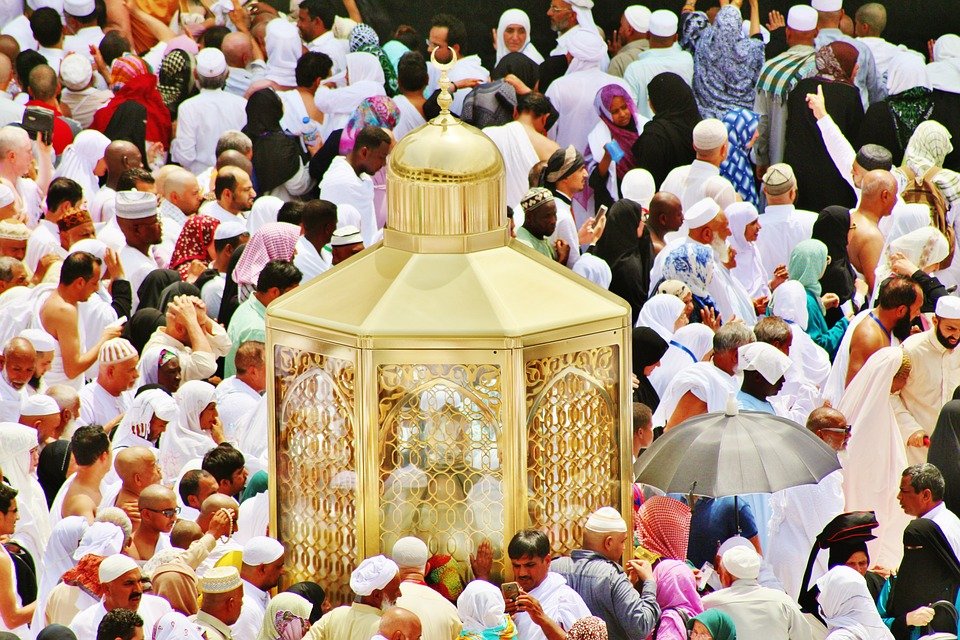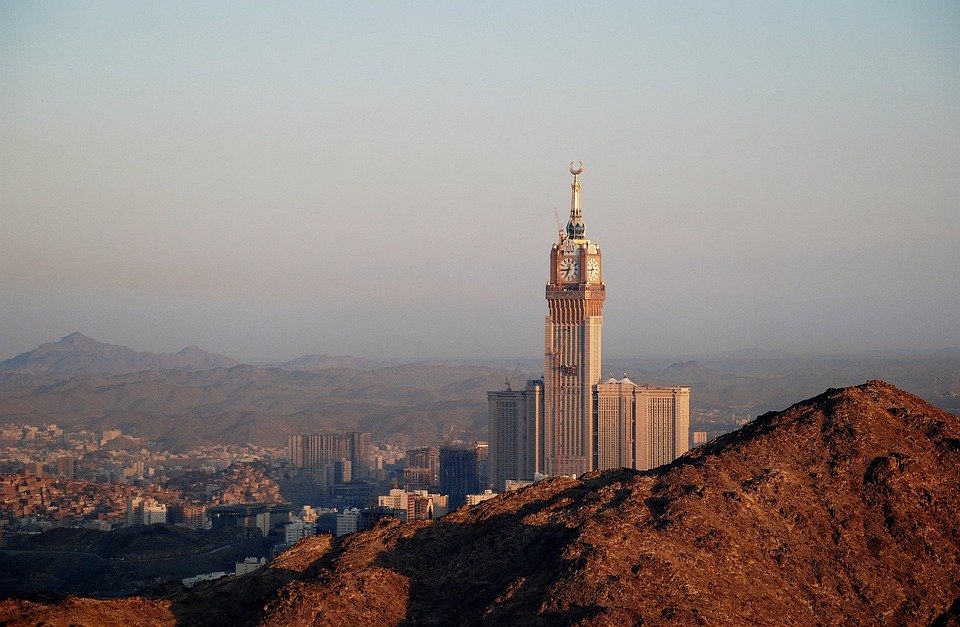You are here to read: How is the Sai Symbolic in Islam Hajj: A Deep Dive – A Thoughtfully Written Guide Offering Spiritual Wisdom and Travel Advice for Every Pilgrim who is going on holy journey of Hajj or Umrah.
In exploring “how is the Sai symbolic in Islam Hajj,” we uncover a rich tradition steeped in meaning and faith. The Sai is a pivotal ritual representing the heartfelt pursuit of Hagar, the wife of Prophet Ibrahim, as she searched for water for her son, Ismail. This act of diligently walking between the hills of Safa and Marwah is not just a physical journey; it embodies the spirit of determination and reliance on God. In this article, I promise you will find a comprehensive guide to understanding the Sai’s significance during Hajj, highlighting its importance within the larger context of Islamic faith.
The significance of Sai in Hajj cannot be overstated. It serves as a reminder of faith, resilience, and the divine mercy that guides us in our times of need. By walking the same path that Hagar did, we connect with the essence of trust in Allah’s provision. At Airlinkhajjandumrah.com, we pride ourselves on our expertise in the field of Umrah and travel to Makkah and Madinah, honed over nine years of dedicated service since 2016. I believe our insights into “How is the Sai Symbolic in Islam Hajj: A Deep Dive” will provide you with meaningful understanding and enrich your spiritual experience.
How is the Sai Symbolic in Islam Hajj: A Deep Dive
Understanding the Importance of Hajj
Hajj stands as one of the five pillars of Islam, a vital role in a Muslim’s life. Every year, millions of Muslims gather in Mecca for this sacred pilgrimage. During these days, they perform various rituals that allow them to connect with their faith and community. Among these rituals lies the act of Sa’i, which is equally significant and deeply meaningful. This act reflects the determination and faith of Hagar, the wife of Prophet Ibrahim (Abraham), as she searched for water for her son, Isma’il (Ishmael).
When we think about Hajj, we picture the grand mosque and the Kaaba. But Sa’i adds a unique layer to the experience. It brings to mind the themes of perseverance and hope. Muslims perform Sa’i by walking seven times between the hills of Safa and Marwah. Each step echoes a historical and spiritual legacy. For many, this rhythmic motion symbolizes resilience and trust in Allah’s mercy.
The Ritual of Sa’i: Steps of Faith
As we step into the sacred space between Safa and Marwah, the excitement fills the air. Sa’i is not merely a physical act; it embodies a spiritual journey. Pilgrims recite prayers and praises as they walk, creating a harmonious atmosphere. Each step taken carries the weight of prayers and desires. The symbolism here is profound: every stride reflects a commitment to one’s faith and beliefs.
The act of moving back and forth becomes a dance of devotion. The distance between the two hills is 450 meters, but it feels both short and long. Each time pilgrims ascend one hill, they look toward the Kaaba. The sight reaffirms their purpose. The heart swells with emotion, resonating with the sacrifices made by Hagar. This ritual serves as a reminder that faith demands effort and persistence.
Sa’i: A Reflection of Inner Strength
Sa’i teaches us that challenges are a part of life. When Hagar was searching for water, she endured hardship, but her determination shaped her legacy. In performing Sa’i, Muslims echo this same spirit of resilience. Each step represents overcoming obstacles. It reminds us that faith is not just about passive belief; rather, it demands action and bravery.
You're at the middle of this awesome post at AirlinkHajjandUmrah.com through: How is the Sai Symbolic in Islam Hajj: A Deep Dive. Keep reading, it gets better!
Furthermore, inhaling the scent of the sacred space fills us with inspiration. With each lap, we reflect on our personal struggles and triumphs. Pilgrims gather, each one with stories that connect us as a community. We recognize that while the paths we walk may differ, we all share the same vision of seeking closeness to God. This unity during Sa’i serves to strengthen our bonds, emphasizing the importance of collective faith.
Sa’i and the Spirit of Sacrifice
The essence of Sa’i is deeply woven into the fabric of sacrifice. Hagar’s search for water illustrates the heart of this ritual. In Islam, sacrifice is not just about physical offerings; it’s about giving our time, energy, and love for our faith. Each time we ascend one hill, we remind ourselves of our own sacrifices, be it for our families, communities, or beliefs.
Experiencing Sa’i ignites reflections on what we are willing to endure for those we cherish. The pilgrimage emphasizes the idea of selflessness. As we walk, we think about the many who have come before us, and those who will come after us, seeking the same spiritual rejuvenation. This shared experience plants seeds of hope and determination in our hearts, encouraging us to embrace the challenges we face in our everyday lives.
The Connection to Prophetic Traditions
Sa’i has a deep connection to the teachings of the Prophet Muhammad (peace be upon him). He emphasized the importance of following the examples set by the prophets. By participating in Sa’i, Muslims honor the legacy of Hagar. It connects their actions to a rich tradition and serves as a reminder to uphold the lessons learned through history.
The Prophet’s life was filled with examples of patience and perseverance, attributes that Sa’i embodies. As we engage in this ritual during Hajj, we invoke his teachings and the spirit of his mission. In a world filled with distractions, these moments of focused devotion reinforce the importance of orienting our lives towards divine purpose. We walk, not just for ourselves, but carrying the teachings of our beloved Prophet and seeking to embody them in our lives.
The Role of Community in Sa’i
As we gather for Sa’i, we become part of a larger community. This shared experience magnifies the power of faith. Pilgrims from all walks of life come together, united by common goals. The sight of fellow Muslims, young and old, walking with determination creates an atmosphere of solidarity. We cheer each other on, an unspoken bond fostering encouragement.
Being surrounded by fellow believers amplifies the spiritual energy of Sa’i. We realize that our journeys are interconnected. When one person stumbles, another offers a hand. When one person prays, dozens of voices echo in response. This communal aspect highlights the importance of support and solidarity in faith. It’s a beautiful reminder that we don’t face our challenges alone; we are in this together, uplifted by the strength of our shared beliefs.
Conclusion: The Lasting Impact of Sa’i
In reflecting upon Sa’i, we see a rich tapestry woven of faith, sacrifice, and community. This sacred ritual during Hajj not only honors historical traditions but also resonates with our contemporary lives. The act of walking between Safa and Marwah isn’t simply physical; it’s a profound journey of the heart. Each step beckons us to consider our values, our hopes, and our dedication to our faith.
In the end, Sa’i symbolizes a longing for connection, both with our history and with each other. It teaches us that every challenge can lead to a deeper understanding of ourselves and our beliefs. As we step forward in our lives after Hajj, may we carry the lessons and spirit of Sa’i with us, motivating us to face our challenges with courage and faith. It invites us to live our lives fully, keeping both the present and the future in our sights, always aspiring for a better tomorrow.
That wraps up How is the Sai Symbolic in Islam Hajj: A Deep Dive. Thanks for sticking with us till here! Share this: How is the Sai Symbolic in Islam Hajj: A Deep Dive with your friends.
Check our homepage at Air Link Hajj & Umrah for more awesome updates.
Some interesting posts are: 1: Umrah Mubarak, 2: When is Umrah closed 2026?, 3: When does Umrah start after Hajj 2026?
Mushu, an experienced Saudi Arabia traveler and writer, shares insightful tips and spiritual reflections to enhance Hajj and Umrah journeys for fellow pilgrims. He has been to Makkah and Madina from 2016 to 2023 many times and his posts will reflect this.







